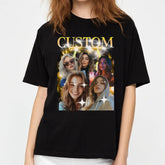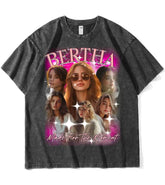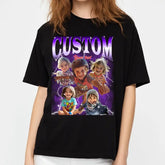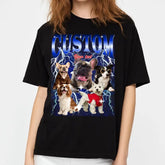Heat Transfer VS Digital Direct-to-Garment (DTG) Printing,how to choose?
Direct To Film printing(DTF)VS Digital Direct-to-Garment (DTG) Printing Technologies
In the realm of textile printing, two prominent technologies stand out: Direct To Film printing(DTF) and Digital Direct-to-Garment (DTG) printing. Each technology offers unique advantages and is suited to different applications, making it crucial for manufacturers and designers to understand their differences before making a choice. This article delves into the comparisons between Heat Transfer and DTG printing, examining their processes, costs, quality, versatility, and suitability for various production needs.Process Overview
Direct To Film printing(DTF)

DTF printing involves a two-step process. First, the desired image is printed onto a transfer paper or film using inkjet or laser printers. This transfer film then undergoes a heat press process where high temperatures and pressure are applied to transfer the ink from the film onto the fabric. The heat causes the ink to sublimate or transfer onto the fabric, creating a permanent bond.
Digital Direct-to-Garment (DTG) Printing
DTG printing is a direct-to-fabric process that utilizes inkjet technology. Specialized digital printers equipped with micro-piezo print heads jet textile-specific inks onto the fabric. These inks penetrate the fiber's surface, locking the color within the fabric for better durability. DTG printing does not require transfer media, making it a simpler and more streamlined process.
Cost Comparison
Direct To Film printing(DTF)
The initial setup for DTF printing involves acquiring transfer paper, a heat press machine, and potentially specialized inks. The cost of transfer paper adds to the overall expenditure, especially for large-scale production. However, once the setup is in place, DTF printing can be efficient for bulk orders due to its ability to quickly apply transfers to multiple garments simultaneously.
Digital Direct-to-Garment (DTG) Printing
DTG printing incurs lower upfront costs, primarily because it only requires a digital printer and textile inks. There is no need for transfer media, simplifying the process and reducing material expenses. While DTG printers are initially more expensive, they offer flexibility and cost-effectiveness for small to medium production runs and personalized items.
Print Quality and Versatility
DTF Printing
Heat Transfer printing offers vibrant colors and high-resolution images, thanks to the precision of modern inkjet and laser printers. However, the quality can vary depending on the fabric type and the transfer paper used. The heat press process may also leave slight pressure marks on the fabric, though advancements in technology have minimized this issue. Additionally, Heat Transfer printing is best suited for synthetic fabrics like polyester, as natural fibers like cotton may not produce optimal results.
DTG Printing
DTG printing excels in producing high-resolution, detailed prints with a wide color gamut. The inks penetrate deep into the fabric fibers, resulting in prints that feel soft and natural, without the added texture or stiffness often associated with other printing methods. DTG printing is highly versatile, suitable for both natural and synthetic fabrics, and works well on a variety of colors and textures.
Production Suitability
Heat Transfer Printing
DTF printing is ideal for high-volume production due to its efficiency in applying transfers quickly and consistently. It is particularly suited for large-scale customization of uniforms, sportswear, and promotional apparel. The ability to pre-print transfers allows for better inventory management and faster turnaround times once the heat press application begins.
DTG Printing
DTG printing shines in small to medium production runs and personalized printing. Its ability to print directly onto fabric without the need for plates or screens makes it highly flexible, allowing for quick changes in designs and rapid prototyping. This makes DTG printing perfect for fashion designers, e-commerce sellers, and anyone needing to create unique, customized garments.
Environmental Impact
DTF
While DTF printing is efficient in terms of production speed, it generates waste in the form of used transfer papers. These papers, often plastic-based, contribute to environmental pollution unless properly recycled. The heat press process also consumes significant energy.
DTG
DTG printing is generally more environmentally friendly. It uses water-based inks that are less harmful to the environment and produce less waste compared to traditional printing methods. Additionally, the direct-to-fabric process eliminates the need for transfer media, further reducing waste.
Conclusion
Both DTF and DTG printing technologies have their strengths and are suitable for different production scenarios. DTF printing is ideal for high-volume production, especially with synthetic fabrics, offering vibrant colors and quick application. On the other hand, DTG printing excels in small to medium production runs, personalized items, and versatility across fabric types. Its high-resolution prints, soft feel, and environmental benefits make it a popular choice for fashion designers and custom apparel creators.
When choosing between these technologies, consider your production needs, fabric type, cost constraints, and environmental impact. Understanding these factors will help you make an informed decision that aligns with your business goals and customer expectations.








